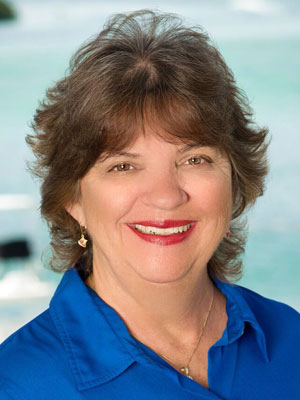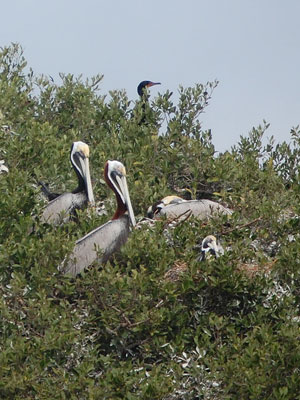Heather Young joins TBRPC, ABM
 Heather Young, a marine scientist specializing in coastal management issues, has joined the Tampa Bay Regional Planning Council as environmental planner and staff to the Agency on Bay Management.
Heather Young, a marine scientist specializing in coastal management issues, has joined the Tampa Bay Regional Planning Council as environmental planner and staff to the Agency on Bay Management.
She earned a master’s degree from the University of North Carolina Wilmington and most recently served as climate adaptation specialist at the Florida Fish and Wildlife Conservation Commission. She also has worked as stormwater program administrator at the city of Largo, as a research technician at Coastal Carolina University specializing in water quality and watershed planning and as habitat restoration coordinator at the New York State Department of Environmental Conservation.
“Heather brings an incredibly well-rounded background in environmental issues to the council,” comments Sean Sullivan, executive director. “She’ll be coordinating our environmental planning, particularly climate adaptation, for the region. Her background in stormwater and habitat restoration also will be critical as our region continues to grow.”
[su_divider top=”no”]Sewer overflows will take time to assess
Impacts of untreated and partially treated wastewater flowing into Tampa Bay following Hurricane Hermine may not be known for several months.
More will be known about water quality in various bay segments early next year when staff from the Environmental Protection Commission of Hillsborough County assesses water clarity results from 2016 monthly sampling. EPC samples 45 locations in the bay for a variety of parameters, including dissolved oxygen, turbidity and microscopic algae. The Tampa Bay Estuary Program analyzes and reports the data as an annual water quality “report card.”
Additionally, new seagrass estimates are expected from the Southwest Florida Water Management District. Those estimates are based on aerial photos taken last winter and will not reflect the 2016 discharges, but may show any impact from similar emergency wastewater discharges that followed torrential rains in late summer 2015.
“People care deeply about the health of the bay, and know its value as a centerpiece of our economy and environment,” said Tampa Bay Estuary Program Director Holly Greening said. “The bay has made remarkable progress over the last 30 years because governments, industries, scientists and citizens have come together for the good of the bay. We remain confident that the Tampa Bay community can keep bay restoration moving forward through a collaborative approach.
[su_divider top=”no”]Main named champion of sustainable seafood
 Dr. Kevan Main, a senior scientist at Mote Marine Laboratory in Sarasota, has been recognized as one of 12 “White House Champions of Change for Sustainable Seafood.” Main, director of Mote’s 200-acre Aquaculture Research Project since 2001, has directed the creation of an inland marine system that recycles 100% of the saltwater it uses and feeds its fish waste to salt-loving plants which are sold to gourmet restaurants. (Learn more)
Dr. Kevan Main, a senior scientist at Mote Marine Laboratory in Sarasota, has been recognized as one of 12 “White House Champions of Change for Sustainable Seafood.” Main, director of Mote’s 200-acre Aquaculture Research Project since 2001, has directed the creation of an inland marine system that recycles 100% of the saltwater it uses and feeds its fish waste to salt-loving plants which are sold to gourmet restaurants. (Learn more)
The 12 Champions of Change promote sustainable seafood through commercial enterprises, conservation, management and research. Main is one of just two champions working in aquaculture. With many wild fish stocks overfished, more than half of the world’s seafood is supplied by aquaculture, but more than 90% of seafood consumed in the U.S. is imported.
“U.S. aquaculture has faced tremendous hurdles due to concerns about environmental impacts,” Main said. “In the mid-1990s, it became clear that we need sustainable, water-recycling technologies at a cost our aquaculture producers can afford. Since 2005, my research program at Mote Marine Laboratory has investigated how to integrate plants and fish into recirculating aquaculture systems — including saltwater systems that recycle 100 percent of their water. This is a great way to produce two crops using the same nutrient resource, increasing environmental and economic sustainability.
[su_divider top=”no”]FWC to decide on Critical Wildlife Areas at November meeting
 The Florida Fish and Wildlife Conservation Commission (FWC) is expected to decide whether to designate 14 Critical Wildlife Areas at its meeting Nov. 16-17 in St. Petersburg.
The Florida Fish and Wildlife Conservation Commission (FWC) is expected to decide whether to designate 14 Critical Wildlife Areas at its meeting Nov. 16-17 in St. Petersburg.
Some 400 people submitted comments on the issue, either online or in person at workshops across the state. Critical Wildlife Areas are lands (usually privately owned) that protect important wildlife concentrations from human disturbance during critical stages, such as nesting or migration. The landowner must support the CWA designation before a site can be considered for establishment.
“Nearly everyone who attended the workshops was in favor of extending the CWAs in Tampa Bay,” notes Ann Paul, Florida Audubon’s Tampa Bay Area Regional Coordinator. “We’re hopeful that the FWC will approve the CWAs as its staff has recommended them.”
Two CWAs are proposed for Tampa Bay, the Richard T. Paul Alafia Bank Bird Sanctuary in southern Hillsborough County and the Dot Dash Dit islands located in the Braden River just north of Highway 64.
Much of the Alafia Banks sanctuary, owned by The Mosaic Company with Port Tampa Bay owning the adjacent submerged lands, and managed by Audubon, already is designated as a CWA. The new proposal would create a year-round “no entry” designation and extend that protection to Sunken Island and a 100-foot barrier around the entire sanctuary to minimize impacts to courting, nesting, foraging and migrating birds.
The FWC already has listed Alafia Banks as the most important colony in the state – the two small islands that comprise it annually host thousands of nesting pairs of herons, egrets, pelicans and other waterbirds.
Dot-Dash-Dit Islands, owned by the Carlton Arms of Bradenton and also managed by Audubon, is a series of very small islands important as nest sites for multiple species of waterbirds, including herons, roseate spoonbills and wood storks, a threatened species.
A significant concern has been boaters, fishermen, kayakers and nature photographers venturing too close to the islands. FWC staff and Audubon are requesting a “no entry” buffer zone of 75 to 100 feet be established around them to allow the birds to nest without intrusion.
The FWC meeting is open to the public or comments may be emailed to CWAcomments@MyFWC.com.
[su_divider]